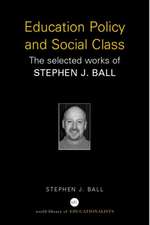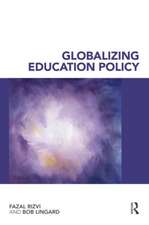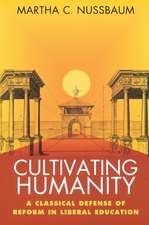Just Violence: Torture and Human Rights in the Eyes of the Police: Stanford Studies in Human Rights
Autor Rachel Wahlen Limba Engleză Paperback – 24 ian 2017
Just Violence reveals the moral perspective of perpetrators and how they respond to human rights efforts. Through interviews with law enforcers in India, Rachel Wahl uncovers the beliefs that motivate officers who use and support torture, and how these beliefs shape their responses to international human rights norms. Although on the surface Indian officers' subversion of human rights may seem to be a case of "local culture" resisting global norms, officers see human rights as in keeping with their religious and cultural traditions—and view Western countries as the primary human rights violators. However, the police do not condemn the United States for violations; on the contrary, for Indian police, Guantanamo Bay justifies torture in New Delhi. This book follows the attempts of human rights workers to both persuade and coerce officers into compliance. As Wahl explains, current human rights strategies can undermine each other, leaving the movement with complex dilemmas regarding whether to work with or against perpetrators.
| Toate formatele și edițiile | Preț | Express |
|---|---|---|
| Paperback (1) | 210.70 lei 6-8 săpt. | |
| Stanford University Press – 24 ian 2017 | 210.70 lei 6-8 săpt. | |
| Hardback (1) | 645.36 lei 6-8 săpt. | |
| Stanford University Press – 24 ian 2017 | 645.36 lei 6-8 săpt. |
Din seria Stanford Studies in Human Rights
-
 Preț: 172.50 lei
Preț: 172.50 lei -
 Preț: 132.07 lei
Preț: 132.07 lei -
 Preț: 213.10 lei
Preț: 213.10 lei -
 Preț: 171.47 lei
Preț: 171.47 lei -
 Preț: 204.32 lei
Preț: 204.32 lei -
 Preț: 195.80 lei
Preț: 195.80 lei -
 Preț: 173.73 lei
Preț: 173.73 lei -
 Preț: 192.52 lei
Preț: 192.52 lei -
 Preț: 216.70 lei
Preț: 216.70 lei -
 Preț: 170.40 lei
Preț: 170.40 lei -
 Preț: 173.36 lei
Preț: 173.36 lei -
 Preț: 169.42 lei
Preț: 169.42 lei -
 Preț: 157.29 lei
Preț: 157.29 lei -
 Preț: 174.96 lei
Preț: 174.96 lei -
 Preț: 151.76 lei
Preț: 151.76 lei -
 Preț: 236.28 lei
Preț: 236.28 lei -
 Preț: 159.34 lei
Preț: 159.34 lei -
 Preț: 163.26 lei
Preț: 163.26 lei -
 Preț: 162.45 lei
Preț: 162.45 lei -
 Preț: 213.10 lei
Preț: 213.10 lei -
 Preț: 169.42 lei
Preț: 169.42 lei -
 Preț: 172.50 lei
Preț: 172.50 lei -
 Preț: 206.50 lei
Preț: 206.50 lei -
 Preț: 225.17 lei
Preț: 225.17 lei -
 Preț: 200.17 lei
Preț: 200.17 lei
Preț: 210.70 lei
Nou
40.32€ • 42.09$ • 33.37£
Carte tipărită la comandă
Livrare economică 04-18 aprilie
Specificații
ISBN-10: 1503601013
Pagini: 264
Dimensiuni: 152 x 229 x 28 mm
Greutate: 0.34 kg
Editura: Stanford University Press
Colecția Stanford University Press
Seria Stanford Studies in Human Rights
Recenzii
Notă biografică
Descriere
Cuprins
The chapter opens by showing that police officers and human rights activists have different ideas not only about what is right, but also about what is true, and that these gaps create problems for research on human rights as well as for their actual protection. The chapter also outlines the case, fieldwork, and theories on which the book is based. Key concepts such as Charles Taylor's notion of social imaginaries are introduced, as well as how these ideas help illuminate the way police understand violence and respond to human rights messages. The chapter concludes with the book's arguments regarding officers' moral beliefs, the relationship of their beliefs to their working environment, and the implications of these beliefs for human rights activism and education.
This chapter reviews research on human rights education as well as studies of state-sanctioned violence and torture in particular. The views of human rights educators in India as well as the setting in which they work are discussed. The chapter also examines the nature of state violence in the country and the political and legal contexts in which the police operate. Finally it considers the book's applicability to contexts beyond India.
If police upheld their conceptions of justice, they would still violate human rights. This chapter reveals why. Rejecting the ideal of universal equality, these police officers believe that there are different types of people deserving different types of treatment. Their aim is not to protect people from harm, therefore, but to harm the right people for the right reasons. For these police, the human rights principle of protecting all people's rights equally undermines justice. This perception challenges human rights educators and activists, who hope to change officers' behavior with education or an appeal to their consciences.
In practice, police fail to uphold justice as even they conceive it. This chapter explains how they understand this failure. Police view political corruption, judicial inefficiency, and insufficient resources as problems requiring a far broader application of violence than even they believe is good. Attempting to solve systemic problems from within the system, the officers often act in ways that exacerbate the violence. This chapter displays the power that interpretation exerts in influencing police behavior and the challenge it presents for activists attempting to garner the acceptance of new norms.
In spite of officers' objections to the human rights framework, they do not reject its language and logic. Instead, they use the language of rights to articulate their own conceptions of justice and even to defend torture. This chapter describes the microdynamics of resistance to international human rights norms, revealing how local and state officials redefine what it means to respect human rights. This redefinition allows police to endorse "rights" as well as torture since in their view these principles are not mutually exclusive. This stance makes it more difficult for activists to shame officers for their violations.
Indian police see human rights as acknowledged and upheld within their local religious and cultural traditions. However, their identity as police sets them apart from local culture and leads them to endorse violence despite the conflict with both international and local norms. This chapter reveals how police negotiate competing moral imaginaries that operate at the local level, and how they ultimately reconcile violence with their moral identities.
Local conceptions of policing and justice are not the only precepts that compete with the human rights framework. This chapter probes the normative competition between international discourses, and shows how police draw from other global norms to deflect the criticism of human rights activists and educators. Police reference the well-publicized violence committed by strong Western countries such as the United States to challenge global rights norms and to defend their own violence.
Despite acquiring the language of human rights, police strongly reject the activists and educators who promote these norms. This chapter shows how police undermine human rights workers' legitimacy. Moreover, the chapter reveals why activism and education can undermine each other, and discusses the paradox this presents for human rights work.
The Conclusion addresses the ethical quandaries raised by the foregoing arguments. Human rights workers face multiple tensions. To what degree do they recognize the systemic causes of torture and to what degree do they hold individual perpetrators accountable? Will perpetrators respond better to education or to coercion through legal action? These tensions reflect a larger one between the aspirational ethics of the human rights movement and the tools of a justice system that leaves little room for the kind of relational work that might provide the best means to stop torture. The book concludes by suggesting a possible way forward in this terrain of complex and imperfect choices.













